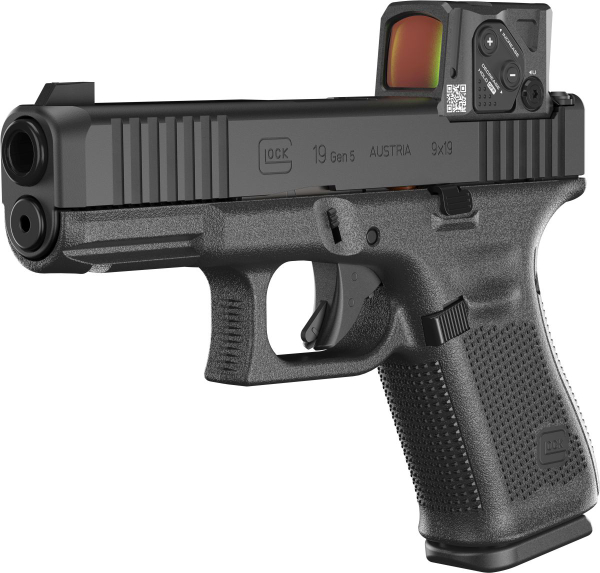How to keep the slide-riding optic on that pistol – that’s a question at the heart of upgrading the handgun from iron sights. We started with reflex optics that had been configured to mount on a plate – largely M1913 attachments to affix to a top rail on a long gun, at the outset, later attaching to plates that attached to milled-out pistol slides.
Imagine the recoil force on a 12-gauge shotgun, then consider the abrupt back-and-forth of a pistol slide. Another issue is altering the weight of the pistol slide on a recoil-operated pistol – possibly affecting reliability.
Looking at the work done by manufacturers – optics and pistols – as well as establishing a procedure to properly secure an optic to a pistol slide, that was best accomplished (in my view) by the LA Sheriff, these things seem to work quite well.
For a while. It seems there’s been a move afoot to increase the service life of electro-optics and their mounting systems.
The story I got was that the people at GLOCK figured a likely service life for their pistols at around 40,000 rounds. Going to Aimpoint, it’s said, they asked how to get an optic that had the potential of lasting that long. Not surprisingly, they identified the mounting of the optic as being a limiting factor.
While a good many makers were aiming for a near-universal mounting cut, GLOCK and Aimpoint went the other way. This was accomplished with a proprietary cut that put the back-and-forth slamming forces on the interface between optic and slide, not between slide and mounting screws.
Their “exclusive package” is a gun and optic combination – the Aimpoint COA enclosed-emitter optic factory-mounted to the following 9mm pistols: include the G43X, G48, G19 Gen5, G45, and the G47. The optic is sold exclusively in this package and is not sold separately.


The Aimpoint A-CUT has the optic sitting deeply in the slide. As no mounting screws go through the optic body – and the glass fits atop the slide within the cut – this enhances durability and prevents the need for “suppressor-height” sights.
In fact, the rear sight is part of the mounting solution. The optic is “shoe-horned” into the slide, the front going into the forward slide cut before the rear of the optic drops into the cut. The rear sight has a clamping surface that compresses the rear of the optic down into the slide, pressing the optic forward into the sloping forward cut.
Two screws, more substantial than typical optics screws, hold the rear sight on.
Don’t forget the thread locker – there’s no free lunch.

Going the other direction is an enclosed emitter optic from Primary Arms Optics: the PLx HTX-1. A domestically produced optic, it features a patent-pending modular chassis mounting system, which is meant to fit nearly all optics-ready handguns. The mounting design – while more adaptable to existing slide cuts – likewise seeks to redirect the recoil stress away from the mounting screws.
Like the Aimpoint COA, the HTX-1 uses a side-loaded CR2032 battery. It fits low enough to the slide that it has a standard sights co-witness. In fact, the front lens is nearly in line with the top of the slide.

The unit uses two screws applied vertically, with two horizontal screws affixing the glass to the chassis.
Also, like the Aimpoint COA, the HTX-1’s lower mounting (and its design) reduces the optic’s height-over-bore – something that will appeal to the “new-to-pistol optics” crowd.
The HTX-1 will issue with the 4 MOA dot reticle or with their ACSS Vulcan Dot, this with a toggleable outer ring.
One new sight with a proprietary fit and the other with an all-but-universal fit; both with enclosed emitters, standard height co-witness and side-loading CR2032 power supply.
These are interesting times.
– Rich Grassi